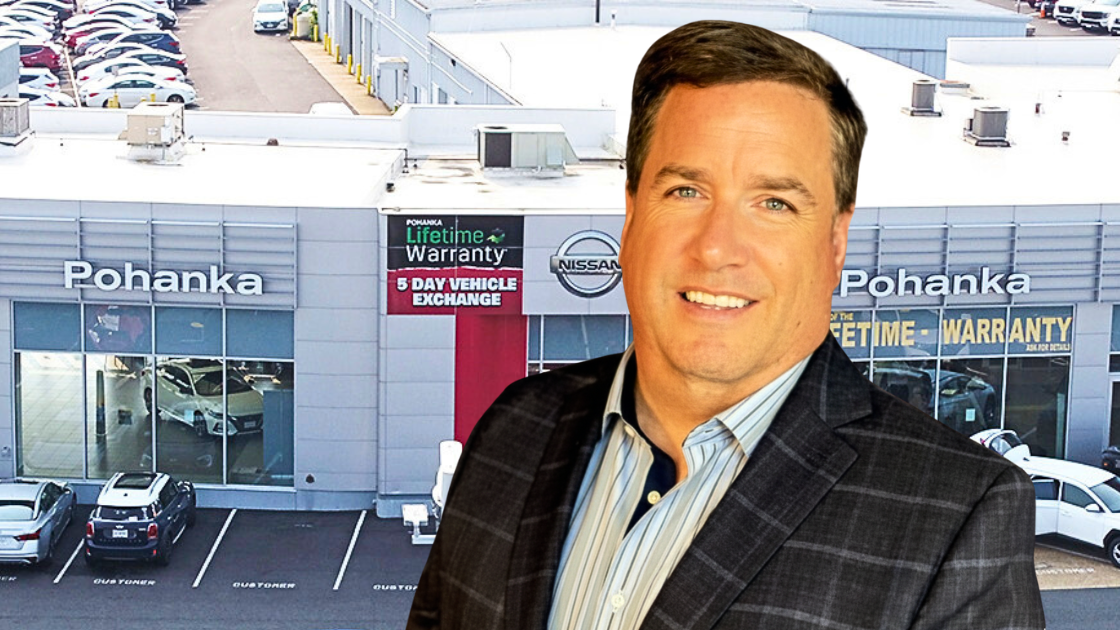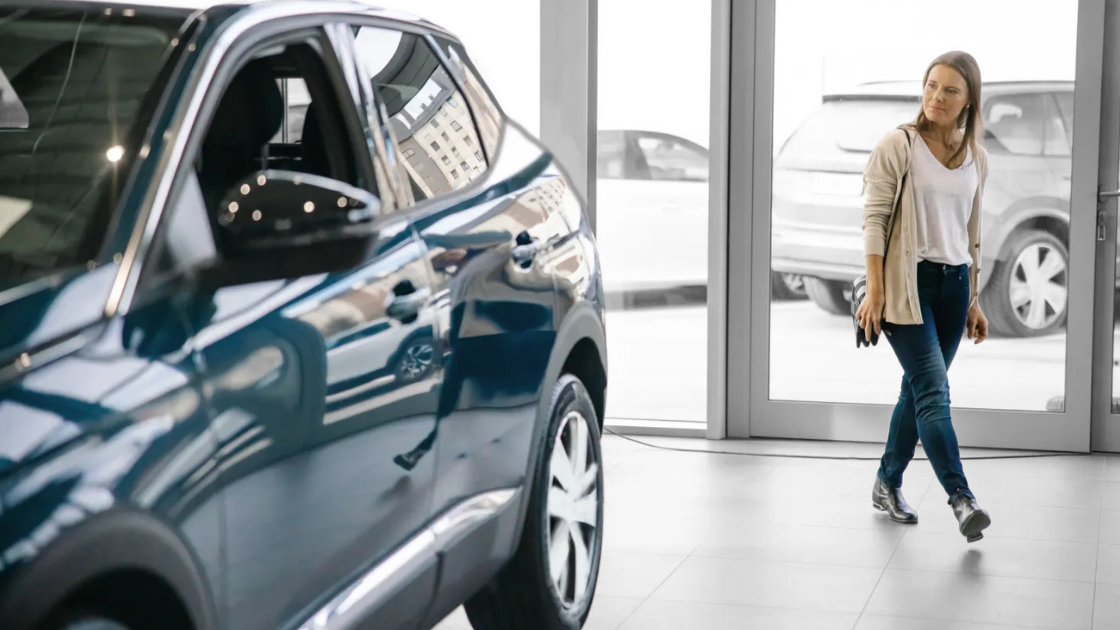
Welcome to another edition of the Industry Spotlight Podcast Recap newsletter—the key lessons from top operators, founders, and execs shaping the future of auto retail.
Today, host Sam D’Arc sits down with Terry Chechakli, director of operations at Smith Auto Group, and Frederick Grimm, co-founder of FIXD, to discuss why street acquisitions beat auction inventory for profitability, how vehicle scanning protects margins, and much more.


Scaling used inventory is all about mastering consistent acquisition flow.
Smith Auto Group successfully grew their used-to-new ratio from 2.5 used cars for every 1 new car, to 2.75 used cars for each new unit, by maintaining steady inventory purchases rather than sporadic bulk buying.
"You can't porpoise, right? I can't go buy a bunch of cars and then they all age on you at the same time." — Chechakli
Avoiding boom-and-bust buying cycles prevents entire inventory batches from aging simultaneously, which kills profitability and limits sales volume.

Trade-ins are providing only 25% of used inventory needs.
To hit aggressive used-to-new ratios like 3:1 while selling 650-700 vehicles monthly, Smith Auto needs roughly 450+ used vehicles per month, but only gets about 110 from customer trades.
This forces dealers to compete for most of the remaining 340+ vehicles at auctions, where they're buying someone else's problem inventory.
"Why does a dealer send a car to auction? Because they don't want to spend the money on it typically." — Chechakli
Dealers accept this risk because they need volume, but traditional appraisals can't quantify reconditioning costs before bidding, forcing them to either overpay for mystery problems or lose deals to competitors willing to gamble.

Customers are clearing diagnostic codes before trading in.
However, even the 25% of used inventory that comes from "trusted" customer trade-ins is “contaminated.”
"I called some of my GMs this last week and they all sent me something from about the last week or 10 days... catalytic converters were bad. One needed a canister, a charcoal canister. And all of those said, codes cleared 55 miles ago…" — Chechakli
After running 2,700 diagnostic scans over six months using AppraisalPro’s OBD2 sensors, Smith Auto discovered one in four customers actively concealed mechanical problems by resetting check engine codes within 2,000 miles before trading.

55% percent of all used car inventory had stored fault codes, and the majority are invisible.
These hidden codes cost dealers thousands in unexpected reconditioning every single month.
"We have some dealers that are on board that say, okay, great, I'm going to use your [diagnostic tools] whenever I see a check engine light or whenever I see a light on the dash. And that's great. You're definitely going to understand the reconditioning costs. But you're going to miss stuff though... a lot of vehicles have hidden or underlying issues that your team needs to be aware of. If you don't plug it in on every vehicle that you're appraising, you're going to miss out." — Grimm
Presented by:
1. AppraisalPRO - Stop getting hammered on hidden trade-in costs. AppraisalPRO instantly reveals repair costs, alerts you to recently cleared codes, and integrates directly with vAuto—meaning diagnostic data populates automatically in your appraisals. Our comprehensive scans take seconds, not minutes, and are simple enough for anyone on your team to use. Join dealers saving $10,000s per month with the fastest and most accurate OBD2 appraisal solution in the market. Special deal for CDG listeners: FREE 1-week trial, then just $195/month with no setup fees and OBD2 scanners included. Visit getAppraisalPRO.com.

Test drives are missing thousands in reconditioning expenses.
Traditional appraisals rely on test drives to uncover mechanical problems, but some of the most expensive issues show no symptoms until complete failure.
"I had one that was a [Mercedes] C300 about four months ago when I was in a store appraising a car, and it came up with turbo problems. And luckily, I even said, ‘well, let's just make sure.’ And I took it back in the shop and had them put [the sensor] on… and sure enough, there was turbo problems." — Chechakli
That Mercedes drove perfectly. No weird noises, no performance issues, no dashboard lights. And without OBD2 diagnostics, Smith Auto would have likely bought the vehicle at a much higher price, only to discover the issues down the line.

Diagnostic scans only take a couple of minutes to complete.
Comprehensive diagnostics on each used vehicle are being done in a fraction of the time it would take a typical manager.
"When the manager gets [the vehicle], the first thing he does is grabs the unit... plug it in... two to three minutes to run all the diagnostics, and then it emails that individual appraiser." — Chechakli
The system also generates printable reports managers can present to customers during negotiations, showing specific repair needs and associated costs.

Code timestamps are providing irrefutable evidence in trade negotiations.
Modern vehicles record the exact mileage when diagnostic codes are cleared, creating a permanent timestamp that reveals whether customers knew about problems before trading.
"We do it in a nice way… You know, we don't tell [the customer], ‘you're trying to pull one over on us.’ We just ask them to tell us what happened. And most of them will just spill." — Chechakli
Presenting timestamped evidence to customers transforms defensive negotiations into honest conversations about actual vehicle condition and fair pricing.

Online pricing tools are reducing dealer control over retail values.
CarGurus, AutoTrader, Carvana, and other platforms provide transparent market data that converges retail pricing toward industry-standard values, removing the traditional negotiation flexibility dealers once enjoyed.
"Profit in this day is all based on the acquisitions. That car's worth pretty much what that car's worth. But how you acquire it really makes the difference." — Chechakli
Knowing exact reconditioning costs allows dealers to maintain proper margins while preparing the vehicle correctly for retail.

Generic OBD2 scanners can only do so much.
Basic diagnostic scanners have existed for decades and cost as little as $20, but they only display cryptic alphanumeric codes that provide no actionable information for trade appraisals.
"You can buy a cheap one off Amazon. It'll give you a code. But then the really hard problem is being able to take that code and correlate it to an exact repair and from that repair getting the exact repair cost. And that's where we're very different." — Grimm
AppraisalPro analyzed hundreds of millions of scans over ten years to match specific codes with actual repairs and costs.

Elite used car managers often overestimate their diagnostic abilities.
Experienced managers with decades of appraisal expertise might resist scanning tools because they trust pattern recognition and intuition over technology.
"You may have intuition. You may have been doing this for your whole life... you probably do have some sense of pattern failures. You know that for a specific year make model at a specific mileage range, it's probably going to be likely to surface problems A, B, and C. But the problem is that's not enough, right? Because there could be anything going on." — Grimm













